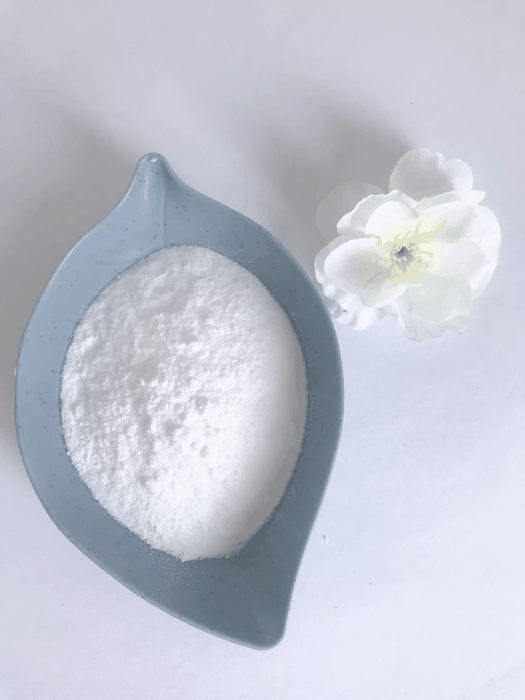4-PENTYNOIC ACID
- CAS NO.:6089-09-4
- Empirical Formula: C5H6O2
- Molecular Weight: 98.1
- MDL number: MFCD00004407
- EINECS: 228-028-0
- SAFETY DATA SHEET (SDS)
- Update Date: 2024-11-11 17:44:06

What is 4-PENTYNOIC ACID?
Chemical properties
white to beige crystalline powder or flakes
The Uses of 4-PENTYNOIC ACID
4-Pentynoic Acid is a hypoglycemic agent shown to increase liver tyrosine aminotransferase and plasma corticosterone while decreasing blood sugar in rats.
The Uses of 4-PENTYNOIC ACID
4-Pentynoic acid was used:
- as building block for the synthesis of library of eight sequence-defined model oligomers
- in one-pot synthesis of the complex polycyclic heterocycles benzo[4,5]imidazo[1,2-c]pyrrolo[1,2-a]quinazolinone derivatives
- in the synthesis of various allenenols lactones [5(E)-(2-allenylidene)-tetrahydro-2-furanones]
- in the synthesis of a cyctotoxic macrolide by ring-closing metathesis of a bis acetylene
What are the applications of Application
4-Pentynoic acid is a building block for sequence-defined model oligomers
General Description
4-Pentynoic acid undergoes copper-catalyzed intramolecular cyclizations to form enol lactones. It also reacts with 1-bromo-1-alkynes in the presence of a Pd catalyst to yield biologically active ynenol lactones.
Properties of 4-PENTYNOIC ACID
| Melting point: | 54-57 °C(lit.) |
| Boiling point: | 110 °C30 mm Hg(lit.) |
| Density | 1.1133 (rough estimate) |
| refractive index | 1.3930 (estimate) |
| Flash point: | 75 °C |
| storage temp. | 2-8°C |
| pka | 4.30±0.10(Predicted) |
| form | Crystalline Powder or Flakes |
| color | White to beige |
| Water Solubility | Soluble in low polarity organic solvents. Soluble in water. |
| Sensitive | Light & Air Sensitive & Hygroscopic |
| BRN | 1742047 |
| CAS DataBase Reference | 6089-09-4(CAS DataBase Reference) |
Safety information for 4-PENTYNOIC ACID
| Signal word | Danger |
| Pictogram(s) |
 Corrosion Corrosives GHS05 |
| GHS Hazard Statements |
H314:Skin corrosion/irritation |
| Precautionary Statement Codes |
P260:Do not breathe dust/fume/gas/mist/vapours/spray. P280:Wear protective gloves/protective clothing/eye protection/face protection. P363:Wash contaminated clothing before reuse. P303+P361+P353:IF ON SKIN (or hair): Remove/Take off Immediately all contaminated clothing. Rinse SKIN with water/shower. P305+P351+P338:IF IN EYES: Rinse cautiously with water for several minutes. Remove contact lenses, if present and easy to do. Continuerinsing. |
Computed Descriptors for 4-PENTYNOIC ACID
| InChIKey | MLBYLEUJXUBIJJ-UHFFFAOYSA-N |
New Products
Tert-butyl bis(2-chloroethyl)carbamate (S)-3-Aminobutanenitrile hydrochloride N-Boc-D-alaninol N-BOC-D/L-ALANINOL N-octanoyl benzotriazole 3,4-Dibenzyloxybenzaldehyde 4-Hydrazinobenzoic acid 1,1’-CARBONYLDIIMIDAZOLE R-2-BENZYLOXY PROPIONIC ACID 3-NITRO-2-METHYL ANILINE 4-IODO BENZOIC ACID 4-HYDROXY BENZYL ALCOHOL 4-(3-chloropropyl)morpholine phenylhydrazine hydrochloride (2-Hydroxyphenyl)acetonitrile 4-Bromopyrazole 5-BROMO-2CYANO PYRIDINE 5,6-Dimethoxyindanone 5-broMo-2-chloro-N-cyclopentylpyriMidin-4-aMine 4-methoxy-3,5-dinitropyridine 2-(Cyanocyclohexyl)acetic acid 2-aminopropyl benzoate hydrochloride 1-(4-(aminomethyl)benzyl)urea hydrochloride tert-butyl 4- (ureidomethyl)benzylcarbamateRelated products of tetrahydrofuran





![(2R)-2-[(S)-1-Hydroxyethyl]-4-pentynoic acid ethyl ester,(R)-2-[(S)-1-Hydroxyethyl]-4-pentynoic acid ethyl ester](https://img.chemicalbook.in/CAS/20200401/GIF/CB72348817.gif)


You may like
-
 6089-09-4 4-Pentynoic acid 98%View Details
6089-09-4 4-Pentynoic acid 98%View Details
6089-09-4 -
 4-Pentynoic acid CAS 6089-09-4View Details
4-Pentynoic acid CAS 6089-09-4View Details
6089-09-4 -
 4-Pentynoic Acid CAS 6089-09-4View Details
4-Pentynoic Acid CAS 6089-09-4View Details
6089-09-4 -
 4-Pentynoic acid CAS 6089-09-4View Details
4-Pentynoic acid CAS 6089-09-4View Details
6089-09-4 -
 13057-17-5 95.0%View Details
13057-17-5 95.0%View Details
13057-17-5 -
 4-bromoaniline 106-40-1 99.0%View Details
4-bromoaniline 106-40-1 99.0%View Details
106-40-1 -
 5-bromo-2-chlorobenzoic acid 99.0%View Details
5-bromo-2-chlorobenzoic acid 99.0%View Details
21739-92-4 -
 15761-38-3 97.0%View Details
15761-38-3 97.0%View Details
15761-38-3
Statement: All products displayed on this website are only used for non medical purposes such as industrial applications or scientific research, and cannot be used for clinical diagnosis or treatment of humans or animals. They are not medicinal or edible.